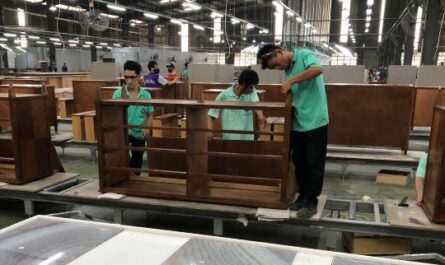Larger furniture-producing countries have rates ranging from 15% to 25%
WASHINGTON — In a move that potentially puts to rest some uncertainty regarding future pricing, the Trump administration has finalized tariffs on a host of countries from which the U.S. imports furniture.
They range from a low of 15% for Turkey to a high of 25% on India, both of which are emerging sources for furniture and some bedding. President Trump recently threated to raise tariffs on India to 50%.
Vietnam, which is among the top furniture-producing countries alongside China, has been assigned a 20% rate, while neighboring Malayasia and Indonesia have each been assigned a 19% rate.
Bangladesh and Brazil, which are sources mostly for wood furniture, have been assigned 20% and 10% rates respectively, while Cambodia, an emerging resource for upholstery and some wood furniture, has been assigned a 19% rate.
Meanwhile, the Philippines, a longtime resource for products using indigenous natural woven materials along with decorative shell and metal accents, has been assigned a 19% rate, while Taiwan, a longtime resource for mixed-media glass and metal furniture, has a 20% rate.
Much of the metal and glass capabilities have shifted to China, particularly for categories such as occasional, dining and outdoor furniture. But as China remains at 30% until a final rate is determined, some of those types of products could shift back to Taiwan.
Items that U.S. Customs and Border Protection discovers have been transshipped through another country to evade these applicable duties will be subject to an ad valorem rate of 40%.
These tariffs, which will replace temporary 10% tariffs in place since earlier this past spring, were determined following negotiations with various countries that have not met expectations of the administration.
“I have received additional information and recommendations from various senior officials on, among other things, the continued lack of reciprocity in our bilateral trade relationships and the impact of foreign trading partners’ disparate tariff rates and non-tariff barriers on U.S. exports, the domestic manufacturing base, critical supply chains and the defense industrial base,” President Trump said as part of the executive order announced Thursday. “I also have received additional information and recommendations on foreign relations, economic and national security matters, including the status of trade negotiations, efforts to retaliate against the United States for its actions to address the emergency declared in Executive Order 14257, and efforts to align with the United States on economic and national security matters.”
In the aforementioned April 2 executive order, there were “conditions reflected in large and persistent annual U.S. goods trade deficits that constitute an unusual and extraordinary threat to the national security and economy of the United States that has its source in whole or substantial part outside the United States,” the president said, adding that the tariffs aim to address that threat.
China’s tariff rate, currently 30%, is still under negotiation. The other tariff rates take effect Aug. 7, according to TariffCheck.org, which tracks and provides information on current tariff policies between the U.S. and countries worldwide.




